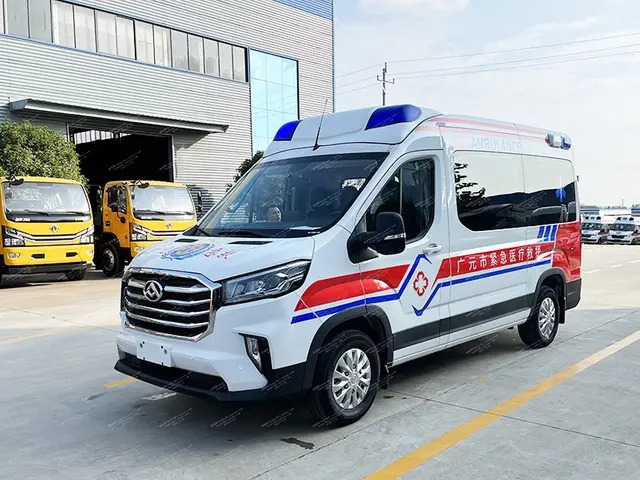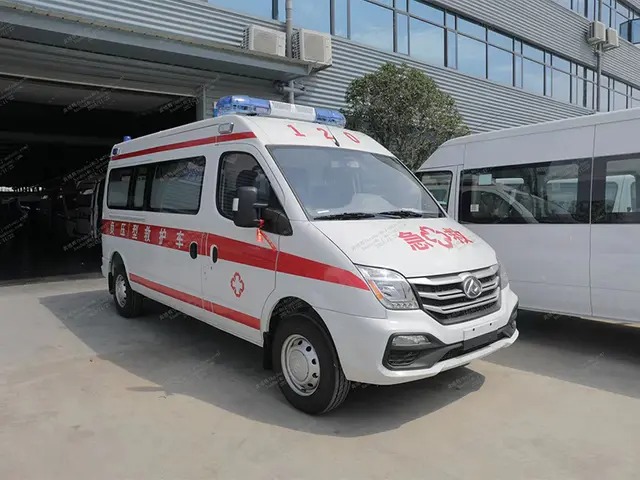


Definition And Features of A Rescue Ambulance
Views: 187 Author: Site Editor Publish Time: 2025-09-23 Origin: Site









Introduction
When emergencies strike, time and resources are the difference between life and death. One of the most essential tools in emergency medical services (EMS) is the rescue ambulance—a specially designed vehicle that goes beyond ordinary patient transport. Unlike standard ambulances that focus mainly on patient transfer, a rescue ambulance is equipped to perform on-site lifesaving interventions, manage complex emergencies, and handle accident extractions.
In this article, we’ll break down exactly what a rescue ambulance is, how it differs from other types of emergency vehicles, its core technical and medical features, and why its role is indispensable in modern emergency response systems.
What Is a Rescue Ambulance?
A rescue ambulance is a specialized emergency vehicle designed for both advanced patient care and technical rescue operations. Unlike conventional ambulances, it carries equipment not only for medical emergencies but also for situations that require extrication, stabilization, or rapid evacuation—such as road traffic accidents, collapsed buildings, industrial disasters, or mass casualty incidents.
Key aspects of its definition include:
Dual-purpose role: Offers both emergency medical treatment and technical rescue capabilities.
Highly trained crew: Staffed with paramedics, EMTs, and sometimes technical rescue personnel.
Versatility: Can adapt to various emergency settings, from urban roads to remote accident sites.
In essence, a rescue ambulance bridges the gap between patient care and rescue logistics, ensuring that critical interventions begin before the patient even reaches a hospital.

Core Features of a Rescue Ambulance
To fulfill its dual role, a rescue ambulance is fitted with an extensive set of medical and mechanical features. These distinguish it from other ambulance types and enable it to handle complex emergencies effectively.
1. Advanced Medical Equipment
Every rescue ambulance carries life-saving devices, such as:
Defibrillators for cardiac arrest management.
Portable ventilators and oxygen systems for respiratory support.
Advanced trauma kits with IV fluids, airway management tools, and immobilization devices.
2. Rescue Tools
Beyond medical gear, rescue ambulances include technical equipment:
Hydraulic cutters and spreaders for vehicle extrication.
Stabilization tools like wedges and cribbing for collapsed structures.
Ropes, harnesses, and lifting devices for confined space or high-angle rescues.
3. Specialized Vehicle Design
Rescue ambulances feature robust vehicle modifications:
Heavy-duty chassis to support extra equipment weight.
High ground clearance for off-road access.
Reinforced interiors with secure storage for delicate medical tools.
Table 1: Medical vs. Rescue Features of a Rescue Ambulance
| Category | Examples of Features | Purpose |
|---|---|---|
| Medical Equipment | Defibrillator, ventilator, IV kits | Patient stabilization and life support |
| Rescue Equipment | Hydraulic spreaders, ropes, cribbing tools | Extrication and technical rescue |
| Vehicle Design | Heavy-duty chassis, reinforced compartments | Durability and safe transport |
Rescue Ambulance vs. Standard Ambulance
To fully appreciate the role of a rescue ambulance, it helps to compare it with the traditional ambulance. While both serve in emergency medical services, their scope of operation is distinct.
Table 2: Rescue Ambulance vs. Standard Ambulance
| Feature | Rescue Ambulance | Standard Ambulance |
|---|---|---|
| Primary Function | Medical care + technical rescue | Medical care and patient transport |
| Crew Training | Paramedics + rescue-trained personnel | Paramedics/EMTs only |
| Equipment Loadout | Medical + extrication and rescue tools | Basic to advanced medical equipment |
| Deployment Scenarios | Complex accidents, structural collapses, MCI | General medical emergencies and transport |
The distinction is critical: rescue ambulances bring the tools and expertise to the scene, making them essential for situations where patients cannot be accessed or stabilized with standard ambulances alone.
Types of Rescue Ambulances
Rescue ambulances are not “one size fits all.” They are customized to meet different operational needs, environments, and service models.
Urban Rescue Ambulance
Designed for cities, equipped with extrication gear for vehicle collisions and high-rise rescues.
Rural or Off-Road Rescue Ambulance
Built with high-clearance vehicles, 4x4 drive, and extended range fuel systems for hard-to-reach accident locations.
Mass Casualty Rescue Ambulance
Configured to transport multiple patients at once, with equipment for triage and large-scale trauma care.
Specialized Industrial Rescue Ambulance
Deployed in mines, oil rigs, or chemical plants, carrying hazmat response kits and industry-specific safety gear.
Each variation adapts to a specific emergency profile, making rescue ambulances versatile assets in any EMS fleet.

Essential Crew Training for Rescue Ambulances
The effectiveness of a rescue ambulance depends not only on its equipment but also on the skills of its crew. Personnel typically undergo multi-disciplinary training that combines medical expertise with technical rescue knowledge.
Core training areas include:
Advanced Life Support (ALS): For cardiac, trauma, and respiratory emergencies.
Vehicle Extrication Techniques: Safe removal of patients from wreckage.
Rope and Confined Space Rescue: For complex industrial or high-angle incidents.
Disaster Response Preparedness: Triage and management of mass casualties.
This dual training ensures that crews can adapt quickly to dynamic emergency conditions, turning the rescue ambulance into a mobile crisis center.
Benefits of Using Rescue Ambulances
Deploying rescue ambulances offers multiple advantages over relying solely on standard ambulances and external rescue units.
Faster Critical Interventions – Immediate medical and rescue response saves valuable time.
Comprehensive On-Site Care – Patients receive stabilization even before extrication.
Resource Efficiency – Combines roles of ambulance and rescue unit, reducing deployment redundancy.
Improved Survival Rates – Early intervention during “golden hour” of trauma care.
Enhanced Public Safety Confidence – Communities gain assurance that their EMS system is fully equipped.
By offering both care and rescue, these ambulances play a pivotal role in bridging survival gaps during emergencies.
Global Adoption and Future Innovations
Rescue ambulances are widely used across Europe, North America, and increasingly in Asia and Africa as EMS systems modernize. Their adoption reflects growing recognition that emergencies are often complex, requiring integrated solutions rather than isolated services.
Future trends include:
Smart Technology Integration: Real-time patient monitoring linked to hospitals.
Electric and Hybrid Rescue Ambulances: Reducing environmental footprint.
AI-driven Dispatch Systems: Ensuring rescue ambulances are deployed where they’re most needed.
Modular Vehicle Designs: Allowing easy reconfiguration for specific scenarios.
These innovations suggest that rescue ambulances will only grow more central in the future of emergency response.
Conclusion
A rescue ambulance is far more than a patient transport vehicle. It is a mobile rescue and treatment unit, uniquely designed to handle complex emergencies where both medical care and technical rescue are required simultaneously. From specialized equipment and trained crews to its versatile designs, the rescue ambulance embodies the evolution of emergency medical services. As disasters, urban growth, and traffic incidents increase worldwide, the need for rescue ambulances will only become more pressing.
FAQ
What is the main difference between a rescue ambulance and a regular ambulance?
A rescue ambulance handles both advanced medical emergencies and technical rescues, while a regular ambulance mainly focuses on patient transport and medical stabilization.
What kind of equipment does a rescue ambulance carry?
It carries advanced medical tools like defibrillators and ventilators, plus rescue tools such as hydraulic cutters, ropes, and stabilization gear.
Who staffs a rescue ambulance?
Rescue ambulances are typically staffed by paramedics, EMTs, and sometimes specially trained rescue technicians.
Are rescue ambulances used worldwide?
Yes, though their prevalence varies by country. They are widely used in Europe and North America and are expanding globally as EMS systems modernize.
How do rescue ambulances improve survival chances?
By delivering both immediate medical intervention and technical rescue, they reduce delays in care during the critical “golden hour” of trauma response.






